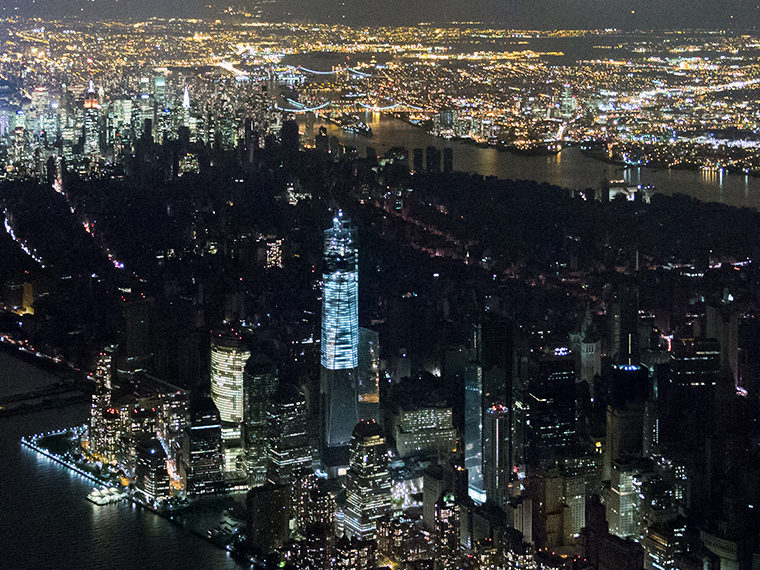A model predicts with 80% accuracy which orders get handed off
After a spate of deadly accidents at overseas factories, leading fashion brands have come under fire for the unsafe workplace conditions in their supply chains. Many companies responded by claiming ignorance — the work was performed at unauthorized subcontractors without their approval, or even their knowledge. Do their pleas of innocence hold water?
In a paper forthcoming in Management Science, UCLA Anderson’s Felipe Caro, UC Irvine’s Leonard Lane and Anna Sáez de Tejada Cuenca of Barcelona’s University of Navarra conclude that apparel brands, at the very least, could infer when goods are being sent to substandard shops. They already have the information they need to predict when an order is likeliest to be farmed out.
“To a great extent, unauthorized subcontracting is predictable, and therefore can be managed,” the researchers write.
Opt In to the Review Monthly Email Update.
The use of unapproved subcontractors surfaced after more than 1,100 people died in the 2013 collapse of Bangladesh’s Rana Plaza, which housed many small, unregulated apparel shops. In this and similar accidents, investigators found clothing items from major fashion and retail companies in the ruins — items, the brands said, that weren’t authorized to be made there.
After Rana Plaza, fashion companies took a more active role in monitoring working conditions at their suppliers, using codes of conducts and factory audits and insisting that plants adhere to international wage-and-safety standards. And the efforts have had some success: A large number of European and North American brands have fixed 90% of their supplier factory safety issues.
Still, unauthorized subcontracting persists. Economic pressures in the low-margin business give suppliers plenty of incentives to farm out work to avoid costly late penalties or expensive airfreight bills. They also frequently take on more work than they can handle directly, subcontracting out the rest.
As a result, fashion companies, unable to monitor conditions outside their official supply chain, remain in jeopardy that the workers who make their products will be exploited and the brands will suffer a hit to their international reputation if those conditions are exposed. The use of unauthorized subcontractors, an industry watchdog group reports, is “one of the greatest areas of risk in the global fashion industry supply chain.”
To understand what drives the use of unauthorized subcontractors, Caro, Lane and Sáez de Tejada Cuenca analyzed more than 32,000 orders placed by an Asia-based supply chain manager who connected more than 220 supplier factories with more than 30 companies selling lesser-known, mass-market apparel goods in North America.
They found that more than one third of the orders in their sample had been subcontracted without authorization, and they identified a handful of factors that can signal when suppliers are likely to allow that to happen.
The best predictor: If one order was farmed out, the next one was almost one third likelier to be subcontracted than if the previous order had been kept in house. This supports the notion that suppliers turn to subcontractors when operating at or close to capacity; as orders overflow the ability to fill them, all subsequent orders will be sent outside. Subcontracting was also more prevalent when the buyer was paying less than the factory’s usual price.
A long lead time for filling an order and the prominence of the buyer were also important factors. Basic items, like colored T-shirts, are often ordered far in advance and are likelier to be sent to informal shops capable of handling only simple jobs. And suppliers for well-known brands, which would suffer a greater backlash if their use of substandard shops were discovered, were less likely to risk subcontracting.
Based on their findings, the authors developed a simple model for buyers to predict with more than 80% accuracy when an order is likely to be sent to an unapproved factory. Because the predictions are based on data that buyers already have, the authors say, the formula could be plugged into buyers’ decision support software to monitor their suppliers’ workloads and pending orders, and to track product categories and average prices.
With such a system, they conclude, brands “could detect and flag orders with a high chance of being subcontracted before they are placed to a given factory.”
Featured Faculty
-
Felipe Caro
Professor of Decisions, Operations and Technology Management
About the Research
Caro, F., Lane, L., & Sáez de Tejada Cuenca, A. (in press). Can brands claim ignorance? Unauthorized subcontracting in apparel supply chains. Management Science.






